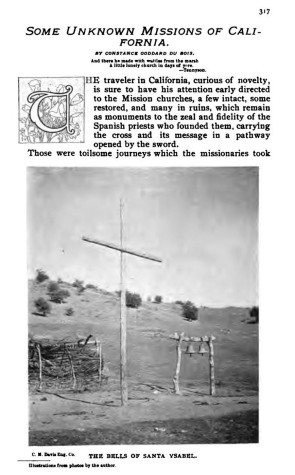Steamship arrivals to the port of San Diego were common topics in the city’s newspapers in the late nineteenth century.
“The following passengers arrived from San Francisco and way ports on the steamer Orizaba yesterday” began one typical notice on page 3 of the September 14, 1872 San Diego Union. There follows a list totaling 47 names. None of the names would jump out to anyone but genealogical or historical researchers. Two of them caught the eye of yours truly:
“J.B. Arrambide,
B. Etcheverry,”
Those two men happened to be natives of France, and their names were Basque in origin. Among the occupations Basques were known for in their native region was raising sheep.
Bernard Etcheverry had originally emigrated from France as a young man in 1856, seeking his fortune in the California gold fields. He did well enough that after a few years he was able to move on to other ventures, first in Santa Barbara, then back in his native France before coming to San Diego County in 1872. There he became a partner with Mr. Arrambide in the Santa Maria Ranch, in what is today Ramona.
It appears they returned to their shepherding roots. A notice in the San Diego Union’s edition of July 22, 1874 reads: “We notice that Messrs. Arrambide and Etcheverry of the Santa Maria Ranch have imported direct from the Government farm at Rambouillet, France, two very fine merino rams. The wool is of very long staple and exceedingly fine, and at the same time free from the oily matter usually found in those fine sheep. The rams cost over $500 each. “
Mr. Arrambide eventually went back to northern California, but Bernardo Etcheverry remained and prospered at Santa Maria.
“By 1881, Bernard Etcheverry was running 12,000 sheep on his 16,700-acre Santa Maria spread,” wrote Charles Le Menager in his 1989 book, Ramona and Round About. At the same time, Etcheverry promoted other types of agriculture, including fruit orchards, vineyards, barley and wheat fields.
“He encouraged sharecroppers to set up homes and farms on his broad ranch and was said to be a generous landlord,” Le Menager wrote.
If you’d like to find out more about the role played by Bernard Etcheverry and another French immigrant in Ramona’s history, you can find out in my book, Valleys of Dreams, for sale through this website.
Sources for this post included Charles Le Menager’s book, Ramona and Round About, historic San Diego newspapers and the archives of Ramona’s Guy B. Woodward Museum.
Get Updates Automatically-Become A Follower of the San Diego History Seeker
You can get weekly updates of San Diego History Seeker automatically in your email by clicking on the “Follow” button in the lower right corner of the blog page. You’ll then get an email asking you to confirm. Once you confirm you’ll be an active follower.

